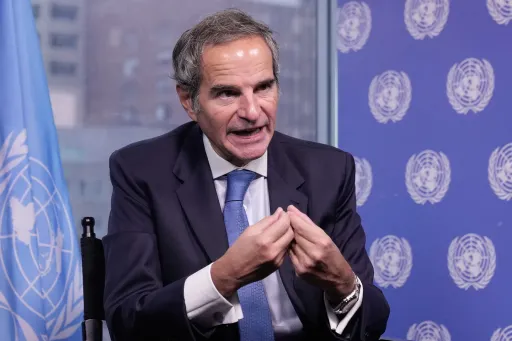By Lisa Modiano
After years of resistance and pressure from Africans and some Western institutions, efforts are finally underway to facilitate the long-awaited return of Africa's invaluable treasures to the continent – with the Benin Bronzes taking centre stage.
The remarkable collection of brass, ivory and bronze pieces originally adorned the palace of the Kingdom of Benin, located in what is now Edo State, Nigeria.
During its zenith, from 1450 to 1650, the flourishing kingdom stretched as far as the Niger River in the east to Lagos in the West. Beautifully crafted by skilled artisans commissioned by the city’s Oba (king), the Benin Bronzes depict a rich tapestry of historical events related to the kingdom's long and prosperous reign.
But during the late 19th century, Benin City was invaded by a British military expedition seeking to expand its colonial influence in West Africa.
In February 1897, British troops launched a punitive raid against the kingdom, now regarded as one of the bloodiest episodes in Britain’s colonial past.
Under the guise of a justified military campaign against a deemed ‘barbaric' kingdom, the ruthless attack effectively signalled the demise of the sovereign Kingdom of Benin.
In addition to the immeasurable loss of life, British forces pillaged the city’s royal palace, seizing its treasure trove of precious artworks as spoils of war.
Amongst their findings were the Benin Bronzes – brought over to Britain only to be dispersed amongst private collections and European institutions, where they predominantly reside to this day.
Since then, the collection – which comprises over 5,000 pieces – has been defined by its tumultuous relationship to the West.
Past injustices
The label "Benin Bronzes" in itself presents an inherent problem: it misrepresents the collection as a whole, as only a very small fraction of the artefacts are crafted from bronze, while the majority consist of ivory or brass.
Unsurprisingly, the two artistic traditions most revered throughout 19th century Europe – namely classical Greece and Renaissance Italy – predominantly employed bronze for their statuary.
As African art scholar Susan Vogel puts it, the misnomer stems from the Western-centric impulse to strip African art of its visible cultural context, reshaping it to conform to European preconceptions of what artistic excellence should look like.
According to Aiko Obobaifo, an oral historian specialising in Benin culture, the bronzes are more than just material objects – they symbolise the religion, way of life and collective memory of an ancient civilisation annexed by British imperialism.
In the year 2023, can we not unequivocally agree that the cultural heritage of a nation is an essential part of its identity and should be preserved and celebrated within its original context?
According to a report commissioned by the French government, approximately 80-90% of Africa’s material cultural heritage still resides in Europe.
Repatriation serves as a cultural, spiritual, and symbolic act that acknowledges the injustices of the past and reinstates a semblance of justice. So why is it taking so long?
Western museums and private collectors often raise concerns about the proper care and preservation of these delicate artworks were they to be returned, and legal complexities surrounding ownership further complicate the process.
Nigeria’s prerogative
Finding a resolution that balances the interests of all parties involved remains a significant task for governments, institutions, and international bodies.
Nonetheless, the Smithsonian Institution, Metropolitan Museum of Art, and the German government have all declared their intention to repatriate numerous sculptures, plaques, and ornaments.
Significant progress was being made on the construction of a new museum in Benin City with the specific purpose of exhibiting and safeguarding the repatriated treasures.
However, the aforementioned proposal encountered a major obstacle following the announcement by Nigeria's departing president that the ownership of the looted items was to be transferred to a direct descendant of the original ruler from whom they were unlawfully taken.
The decision stipulated that any repatriated artefacts may be retained within the Oba's palace, or in any other secure location deemed appropriate by the ruler.
As the global community grapples with the complexities of repatriation, one undeniable truth emerges: the Benin Bronzes are remnants of colonial plunder, and like any other stolen property acquired by force, demand nothing less than their rightful restitution.
The masterpieces, wrought with the craftsmanship and stories of the Kingdom of Benin, possess an intrinsic bond with the land and people from which they were forcibly taken. It is Nigeria's prerogative, not its former colonial powers, to decide their fate.
The author, Lisa Modiano, The author, Lisa Modiano is an art historian specialising in Africa.
Disclaimer: The viewpoints expressed by the author do not necessarily reflect the opinions, viewpoints and editorial policies of TRT Afrika.




















